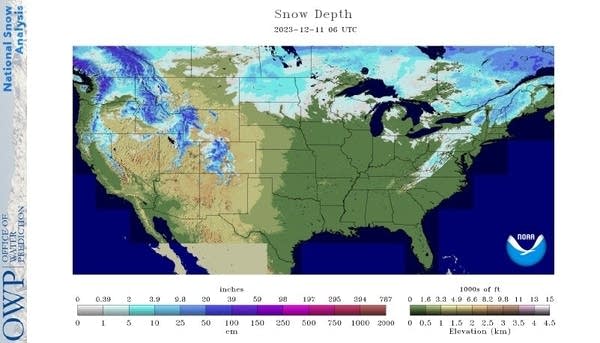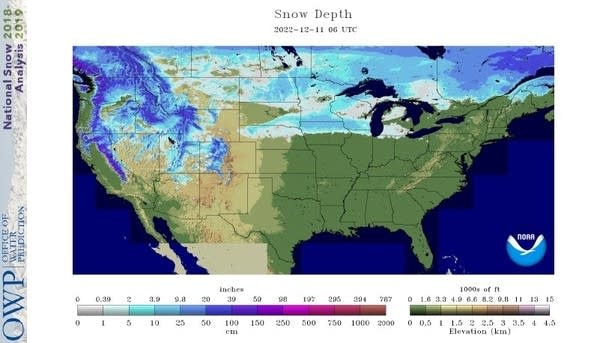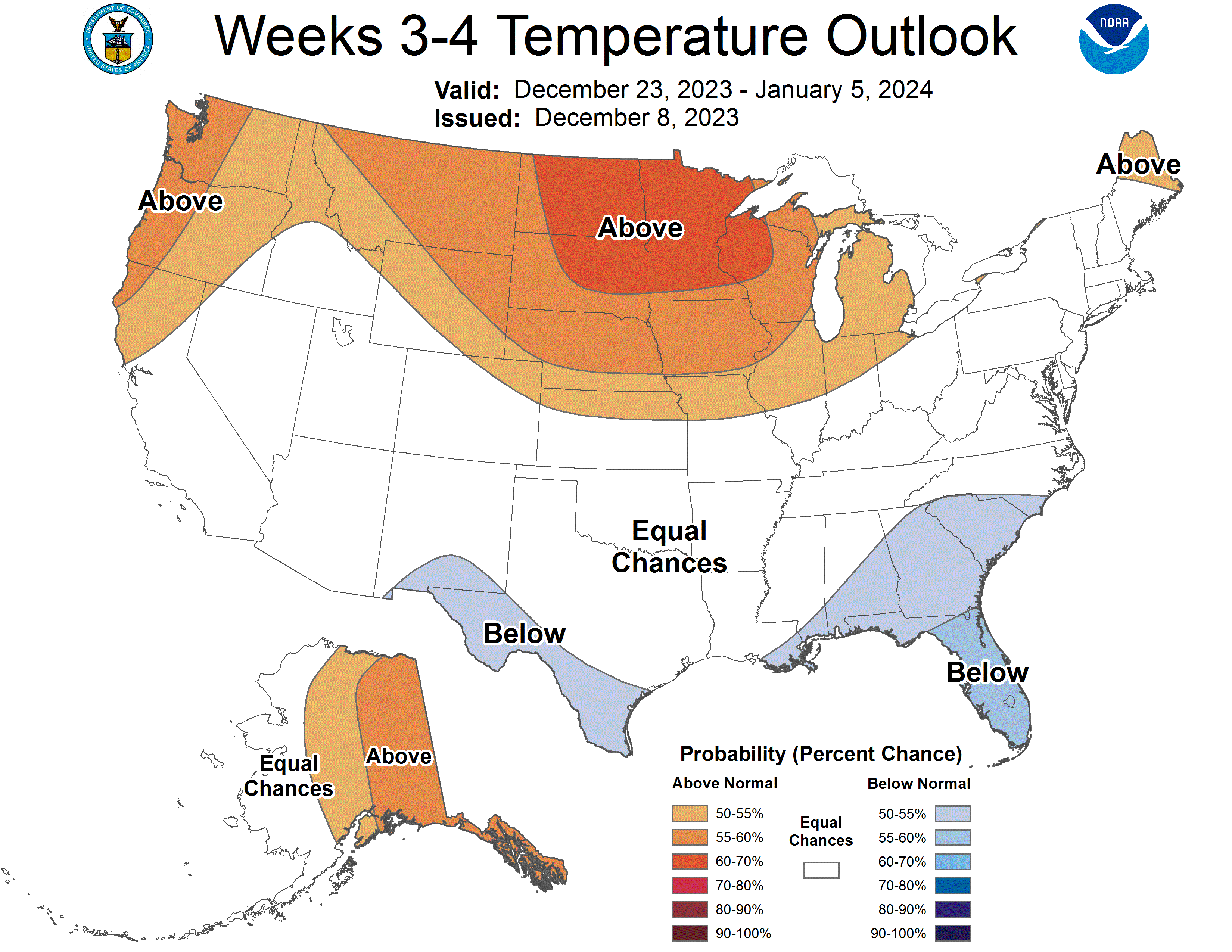El Niño driving lower-than-average snow cover across the US
Upper Midwest has far less snow around compared to 2022

Go Deeper.
Create an account or log in to save stories.
Like this?
Thanks for liking this story! We have added it to a list of your favorite stories.
What a difference a year makes.
You can see the lack of snow cover across our region on the snow depth map at the top of this post. Widespread bare ground runs into parts of Minnesota’s Arrowhead region.
A year ago, December 2022 saw widespread snow cover across the Upper Midwest. Snow depth in the Twin Cities peaked at 12 inches on Dec. 22.
Last year on this date, 70 percent of the Upper Midwest was covered by at least 1 inch of snow depth.
Turn Up Your Support
MPR News helps you turn down the noise and build shared understanding. Turn up your support for this public resource and keep trusted journalism accessible to all.

Fast forward to today. A mere 30 percent of the Upper Midwest is covered by snow as of Dec. 12. Check out the lack of snow on Tuesday’s snow analysis from the National Oceanic and Atmospheric Administration:

The trend is the same for the contiguous United States. Currently, about 19 percent of the U.S. is covered by snow.

Last year at this time about 28 percent of the U.S. had at least 1 inch of snow depth.

El Niño impacts
Yes, our lack of snow cover this December is another symptom of a Super El Niño. A strong and persistent zonal (west-to-east) flow pattern across North America is feeding a steady supply of unseasonably mild air into the U.S.
Forecast models (and thus NOAA outlooks) continue to stamp a big red blob over Minnesota, favoring unseasonably mild air spilling across the Upper Midwest for the next two weeks.

And NOAA’s three to four-week outlook continues the trend into the first days of 2024.

December is already running 7 degrees warmer-than-normal in the Twin Cities, and more like 12 degrees warmer in International Falls and other places in far northern Minnesota.
This December may end up as one of the warmest on record for Minnesota.
I have never seen a Pacific flow pattern this strong and persistent as we move into what should be winter. It looks like we may need to get used to this for most of the winter season.
Stay tuned.
Dear reader,
Your voice matters. And we want to hear it.
Will you help shape the future of Minnesota Public Radio by taking our short Listener Survey?
It only takes a few minutes, and your input helps us serve you better—whether it’s news, culture, or the conversations that matter most to Minnesotans.




